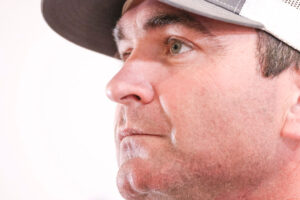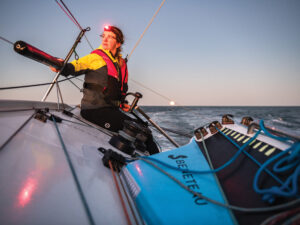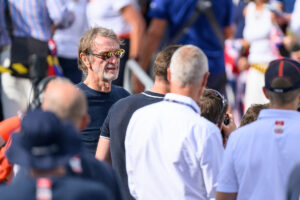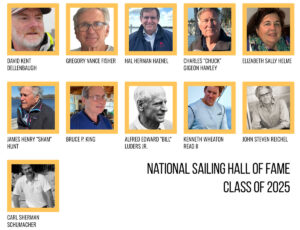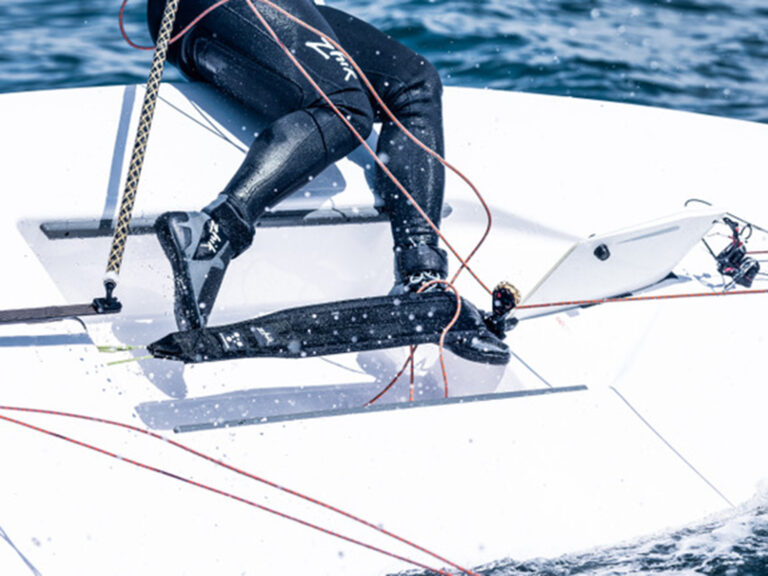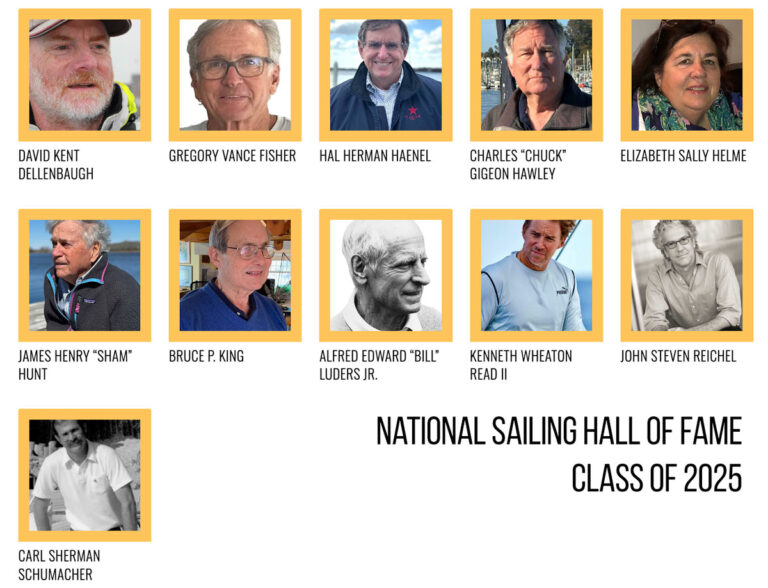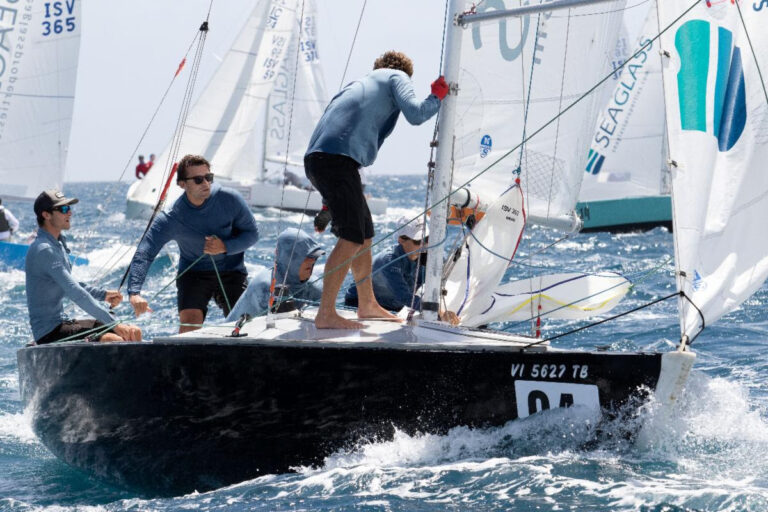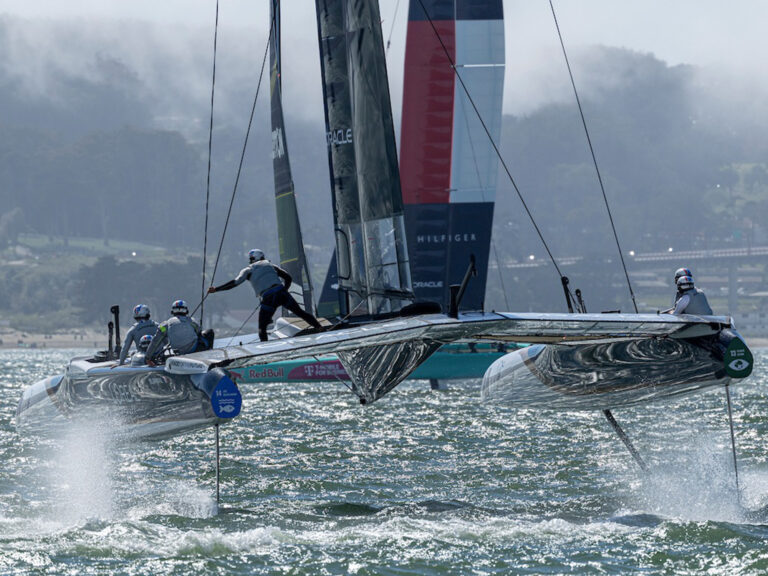It’s life on an angle aboard Sariyah this morning, as we’re heeled over in good breeze and lumpy conditions. We’re about 20 miles away from one of our first waypoints and making about nine knots over the bottom. Looking out the pilothouse I see the C and A watches getting ready to take in the yankee headsail and unroll the genoa, as conditions have lightened up a bit from earlier this morning. It’s blowing around 16 knots and the water temperature is a balmy 63 degrees. Writing my report in the pilothouse can mean an interruption or two; as I was writing Monday’s report I was asked by our captain, Tim Laughridge, to help change headsails. Luckily, it didn’t involve getting into my foulies and heading for the bow. Instead I was operating joysticks. As I watched for signals to start or stop furling, I rolled in the yankee by pushing its joystick forward as our engineer, Dale (Crusty) Tremain, slackened its sheet. Kevin Burnham watched up forward and signaled me when the sail was all the way furled, which was hard for me to see from my vantage point. Then we reversed the process with our genoa. And neither I, nor the crew on deck were doused with waves as we “changed headsails.” Last night’s watches all enjoyed good wind and relatively flat conditions, and we made some miles, very much unlike the night before when we wallowed in the light stuff. Steering Sariyah is much easier when there’s breeze on, and everybody’s mood improved as we finally started making some miles down the track. This morning life is a tad trickier as the wind has lightened up and moved forward, not what we expected. My watch is about to begin and we may have a bit on for our three-hour stint. I have to say that racing Sariyah across the Atlantic isn’t what I’m used to as far as ocean racing is concerned. I sleep in a cabin that has a large closet, plenty of stowage room for my gear, a head with a shower, and air conditioning. Meals are served to us by our chef Salisha Ali and our stewardess Alex Henderson, both of whom contribute mightily to our comfort between meals by appearing with hot cups of tea or coffee and freshly baked cookies. We keep track of the weather and our competition via the Fleet 33 satellite, and three of our crew, including our co-captain Corty Wetherill have been keeping in touch with their families and offices via their satellite telephones. Charlie Barr and his crew aboard the Atlantic in 1905 were also using the latest in technology when they raced across, too. I wonder what sailors who’ll do this race in 2105 will be using. As you can see, life onboard for most of the Rolex Transatlantic fleet is pretty cushy. Lest you think we’re treating this as an ocean cruise I’ll tell you that we are constantly adjusting sail trim, changing sail configurations, and pushing the boat as hard as we can. In a few minutes, Bill Biewenga and I will plot the positions of the rest of our class and fleet and see how we’re doing.
